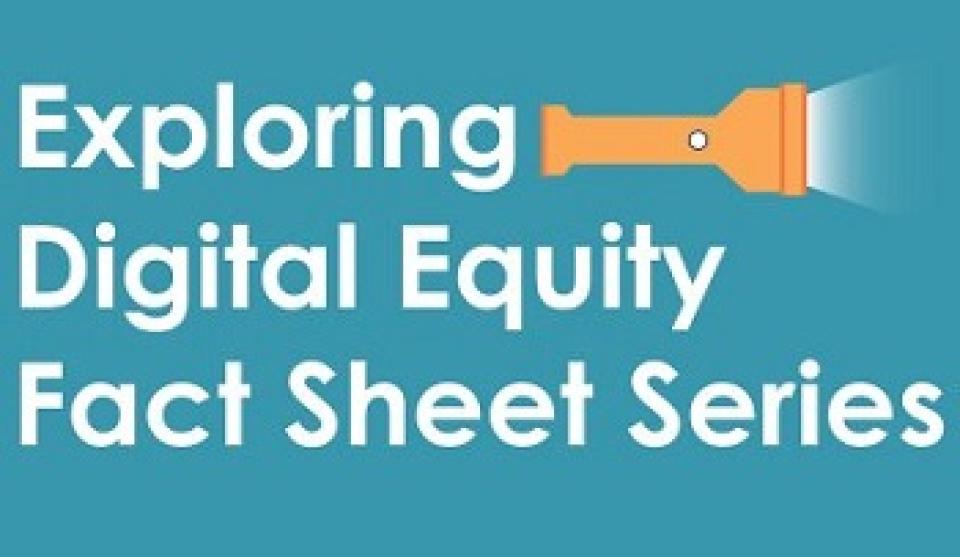
Fast, affordable Internet access for all.

What is digital equity? And why is access to ubiquitous, reliable and affordable high-speed Internet service so vital? The technological issues involved can sometimes seem confusing, especially for those who came of age before the Internet fundamentally transformed how we interact.
That’s why the Institute for Local Self Reliance, with support from AARP, has created the Exploring Digital Equity Fact Sheet Series. The series contains six user-friendly, easy-to-understand fact sheets to help demystify the challenges associated with creating digital equity.
We are releasing the entire series today, while AARP will feature the fact sheets as part of its Livable Communities initiative, an effort to support neighborhoods, towns, cities and rural areas in creating safe, walkable streets; age-friendly housing and transportation options; access to needed services; and opportunities for residents of all ages to participate in community life.
Both ILSR and AARP have created landing pages for the fact sheets as well. You can find our landing page here, and the fact sheet landing page for AARP here.

The fact sheets series ultimately highlight how expanding Internet access to everyone who wants it isn’t an infrastructure problem alone. Achieving digital equity for everyone in a community is a multi-faceted endeavor, and requires engaging and activating an array of stakeholders. The Exploring Digital Equity Fact Sheet Series unpacks the issues, challenges, and opportunities today.
The first fact sheet – What Is Broadband? – covers the basics of Internet access, defining key terms, technologies, and use. It explores who uses the Internet, how, and why the way we define broadband has such an impact on the quality of connections available to households today.
The second fact sheet – Broadband Access Challenges – tackles infrastructure, affordability, and adoption issues. It addresses how mapping challenges have stymied funding programs, what has been done to lower monthly costs, and what is needed to improve adoption rates nationwide.
Third is the Broadband Affordability Challenges fact sheet, which explores the financial obstacles facing unconnected households. It reviews state and federal attempts to reduce those barriers with subsidies and the mandating of low-cost plans, and the models available today which can promote competition and lower prices.
That is followed by the Broadband Availability Challenges fact sheet. That one dives into why some households have access to the fastest Internet infrastructure while others languish on slower connections, and millions of households still lack basic connections at all. It also highlights community-driven efforts to improve local connectivity, and assesses the likely impact of an unprecedented level of federal investment in broadband funding for the future.
The two final fact sheets explore aspects of digital equity that go beyond infrastructure and the cost of connection. These two fact sheets were created with help from the National Digital Inclusion Alliance (NDIA), which works to advance digital equity by supporting community programs and equipping policymakers to act.
The Key Digital Skills for Broadband fact sheet examines the challenges in making sure that everyone who wants to take full advantage of everything the Internet has to offer has the skills to do so. It catalogs the high barriers to entry faced by New Americans, older adults, and other populations, and documents the host of national and local programs that are successfully breaking those barriers down.
And lastly, the Expanding Device Availability for Broadband fact sheet charts the connection between broadband adoption, access, and device use. It offers solutions for a myriad of local contexts, considers the advantages and disadvantages of different models for expanding device ownership and use, and profiles programs that stand able and willing to help communities meet their goals.
ILSR’s Community Broadband Networks Initiative Director Christopher Mitchell said the partnership with AARP made sense because of a shared mutual interest:
Both ILSR and AARP are committed to making sure everyone has a high-quality connection and the ability to use it.
